Edited by Wesley Keppel-Henry for brevity and clarity
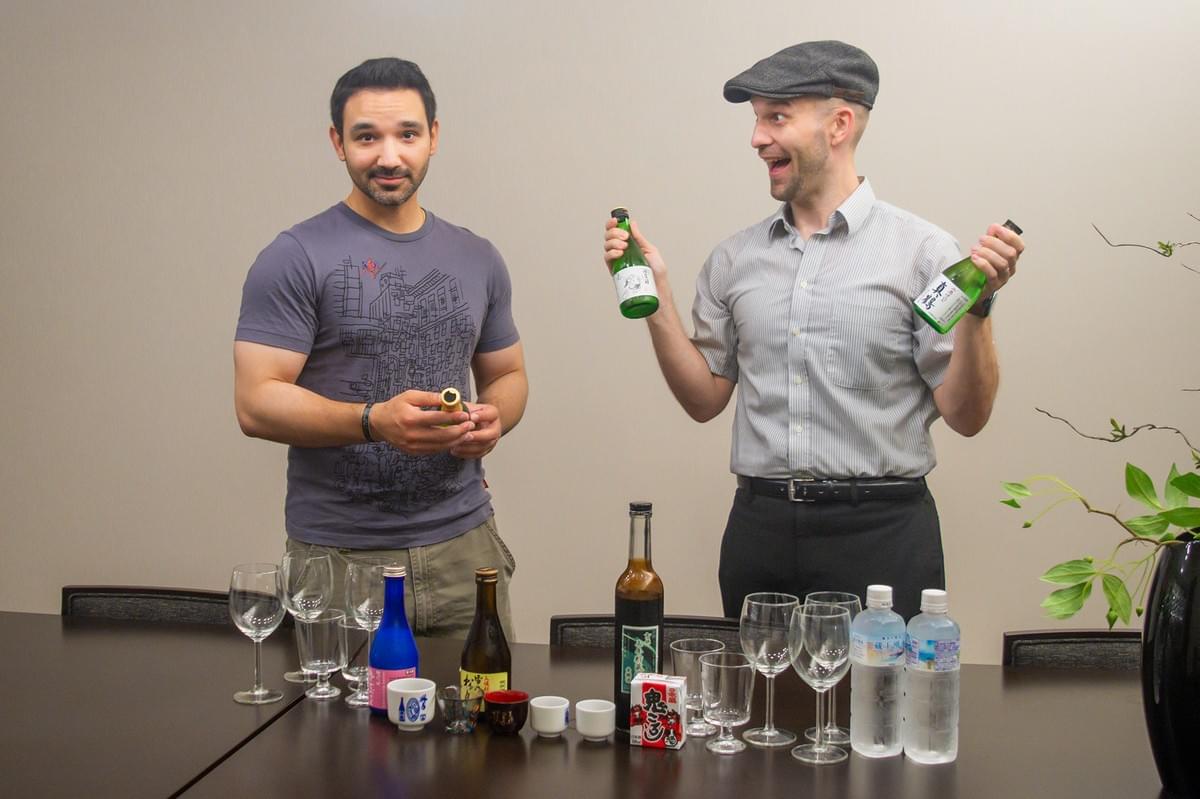
What goes through a sommelier's head while they're tasting? How much difference between sakes can an average palate really distinguish? To find out for ourselves, we set up sake newbie Chris for a tasting session with sake expert Justin Velgus. Hear their candid impressions and conversation as they taste four classy sakes ... and one bottom-of-the-barrel selection.
Our sake expert
Justin Velgus's journey into the world of sake began when he spent two and a half years working for the Fukushima government to promote the prefecture's sake overseas. He is now a certified sake expert, possessing SSI International Kikizake-shi and Sake Education Council Advanced Sake Professional certifications, and is a regular contributor to Sake Today magazine.

Our sake newbie
Chris Califano is paratrooper veteran from New York. After attending college in Florida, he moved to Miyagi, where he has been living for five years now.
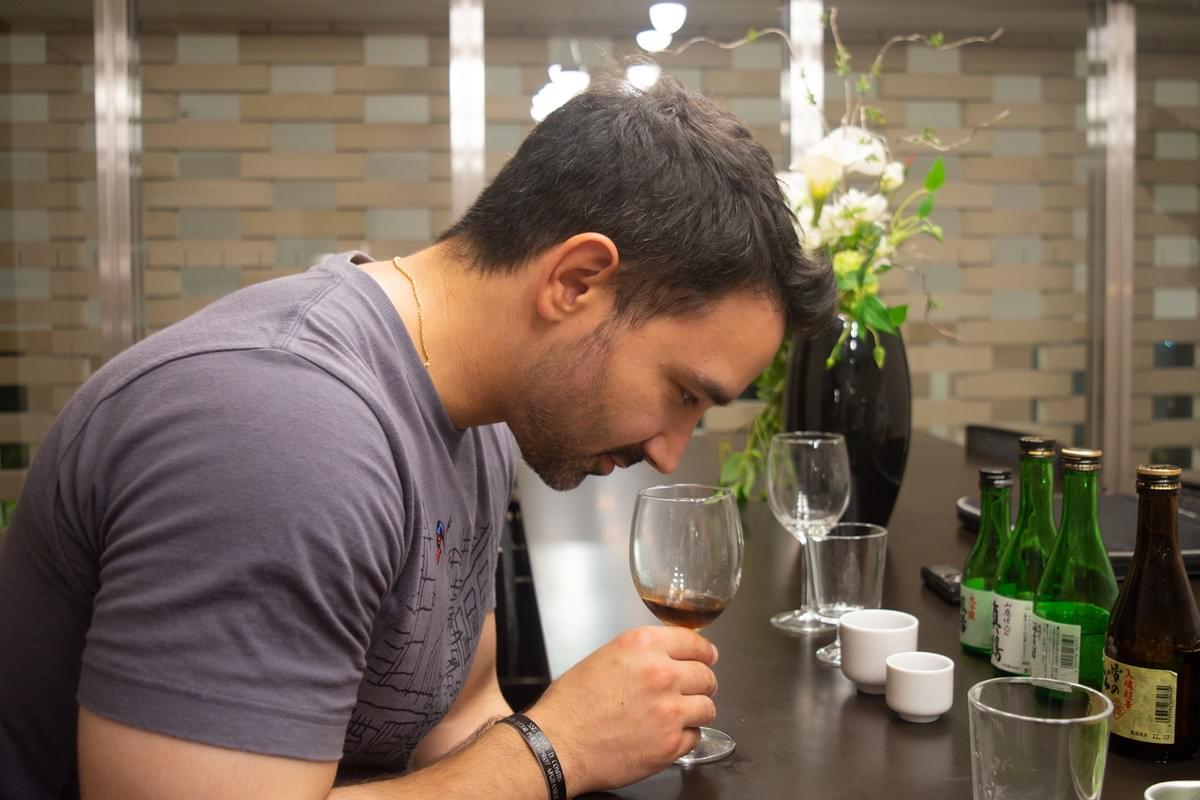
Sendai Motions: Chris, you’ve drunk sake before, right? It’s not like you’ve never tasted it ...
Chris: Yeah. I’ve had a lot of sake before. I started drinking sake in America, but in America I feel like the sake quality is just awful; it’s terrible.
Justin: Sure.
C: I thought that’s just what sake was supposed to taste like. But I just kinda kept drinking it, and that’s the kind of sake I was used to until I came to Japan ... and had, like, real, good sake, and I was like, “Wow, this is worlds apart!” It’s so much smoother, cleaner—
J: And a lot cheaper.
C: Right, yeah. But I never knew what I was drinking. I’ve actually never ordered sake before. When I’ve gone out with friends, or for work parties, they would order it for me, and I would just be like, “This is ... ? Something. Okay, cool.” And I’d just drink it.
J: It's a bit intimidating because they're classified in quite a strange way, and there's just ... so many.
The Super Dry
Yuki no Matsushima Jukon Chokara・雪の松島 入魂超辛
Price (may vary by retailer): 720 mL ¥1,643
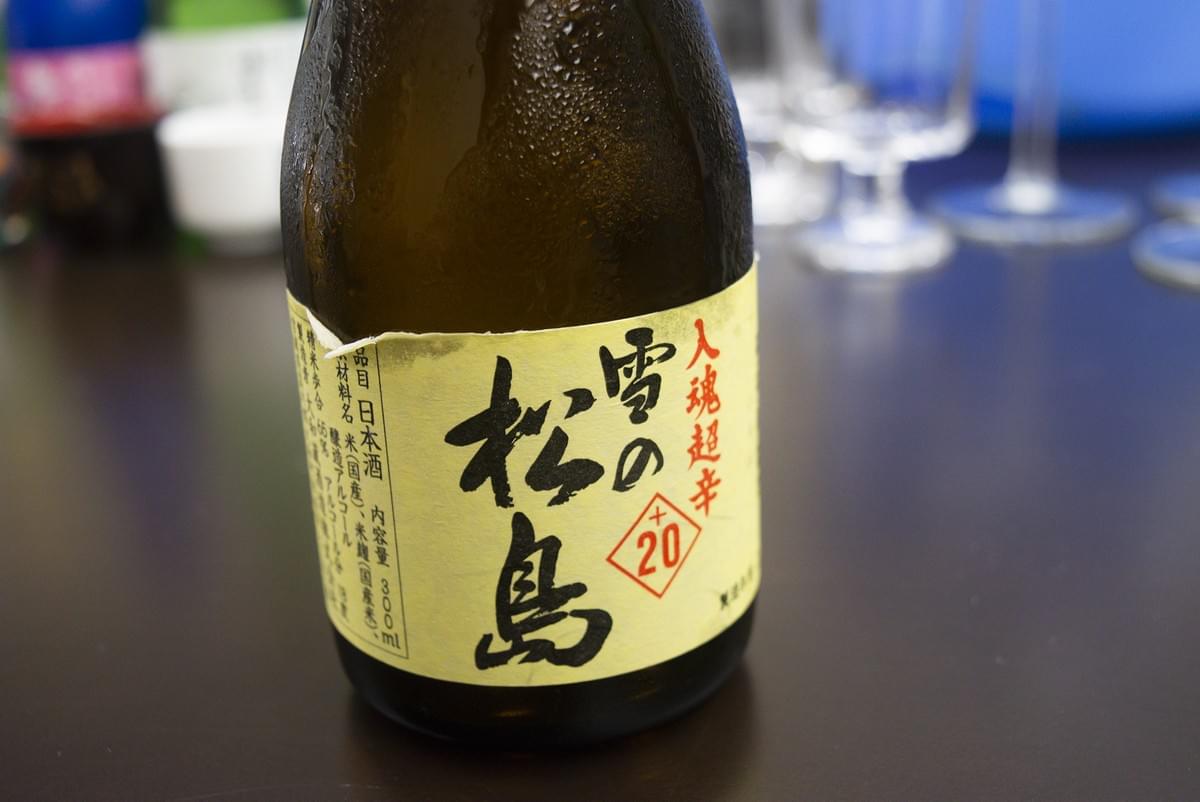
J: Let’s go ahead and maybe pour our first drink ‘cause we are getting thirsty! [laughs] No, just me?
C: Haha. Yes, we are.
J: We’ve got a super dry one. This is Yuki no Matushima and this is from Taiwagura. They wanted to make a super, super dry–tasting sake. [sips sake] Ooooh, so, some people like super dry, some people are like, “ugh.” Yes, there’s a lot of umami going on here.
C, sips sake: Tastes like sake. I like dry wines and dry sake, but this one really, it kind of just stays there, and keeps that, kind of, I dunno, that dryness really sits there for a while.
J: Right, this one does hang around, like an unwelcome party guest. It’s good, but almost too long, isn’t it.
C: Yeah, I feel like this one sits there for a little bit too long, I would say.
J: It’s ... you know. These dry ones are really good, like, when you’re eating greasy food. They’ll just kinda cut through it. Anything with, like acidity or like a super dry. Yeah, cuts through the fat.
The Iconic Ginjo
Junmai Ginjo Urakasumi Zen・純米吟醸 浦霞禅
Price (may vary by retailer): 720 mL ¥2,376
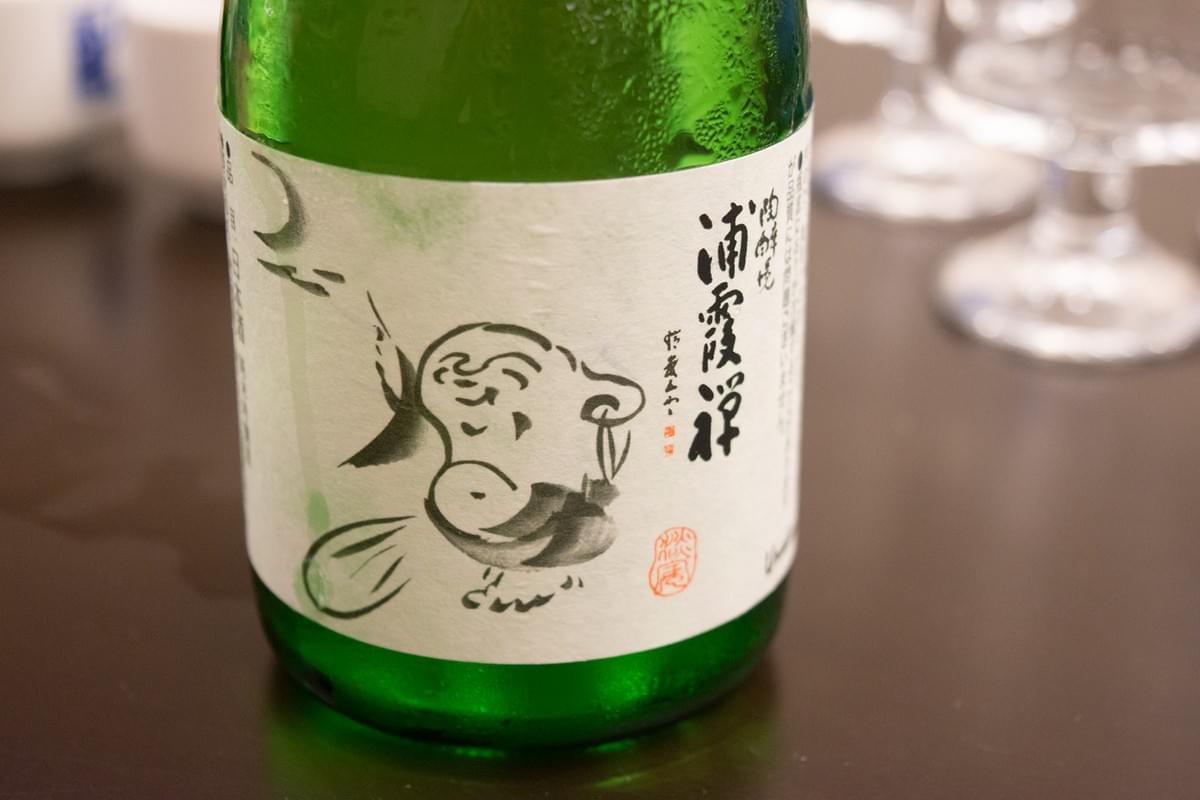
J: I’m gonna open the Urakasumi one. This one is like a typical ginjo sake. Or, specifically, junmai ginjo.
C: This one smells, like, kinda cleaner.
J: Sure.
C, sips sake: It tastes sweeter too.
J: So when you’re tasting, you’re looking for things like, you’re gonna look for what kind of aroma, but also how strong the aroma is. So ideally we’d pour the same amount of sake, and then you can give it a little whirl. And you’re gonna try—how strong is the aroma? Is it really strong? You’re gonna smell it from a couple of inches up. Medium? Probably here. You’re gonna have to dig your nose into it? Quite a weak or delicate smell. So, this one’s a medium, right?
C: This one is, like, definitely sweeter. It’s lighter, more crisp. I mean, I don’t know if I’m right. That’s just my personal feeling.
J: Sure. And that’s how you start. The vocabulary is hard. So you ask the professionals. Or you look [at tasting notes] on the website.
The Slow Brew
Manatsuru Yamahai Junmai-shu・真鶴 山廃仕込み 純米酒
Price (may vary by retailer): 720 mL ¥1,540

J: We’ll do this one right here. This is Manatsuru, so this is the brand name of Tanaka Shuzoten in Kami. This is also of course in Miyagi. They’ve got a really cool brewery, like, from the Meiji period. And what they do is, they have kimoto and yamahai type sake. Go ahead and give it a smell. It’s different—it’s kind of hard to describe but it’s totally different than these two.
C: Yeah, the smell is ... I get it.
J: So give it a taste [sips sake] ... Mmmm!
C: Yeah, that one’s really good.
J: You like this one?
C: Yeah, definitely the best one so far. It’s kind of—
J: Oh really?
C: —a little fruitier, maybe? I think? Sweeter. It’s definitely a little sweeter.
J: Yeah, there’s a sweetness to it. I can taste that as well.
C: But uh, yeah, it’s really good. It’s good because it’s fruitier.
J: Actually, we didn’t cover yamahai did we? So this is a brewing process actually. Most of the sake today, 99% of it is sokujo, which is a fast brewing method. It takes about one month. Basically, they add a little lactic acid into the open tank; it just speeds up the whole sake process.
Yamahai means you just kind of let the sake sit and do its thing [without adding any lactic acid], and just kind of get that natural bacteria. Imagine you’re in, like, a hundred-year-old brewery—a lot of that bacteria is trapped up in the ceiling rafters. And they just let the sake sit there, and the bacteria floats down somehow, and it’s a little bit of magic, you know, and that’s how yamahai sake is made. It takes about two months if you do that, but they do it because, you know, probably tradition, but also you do get a very different-tasting sake.
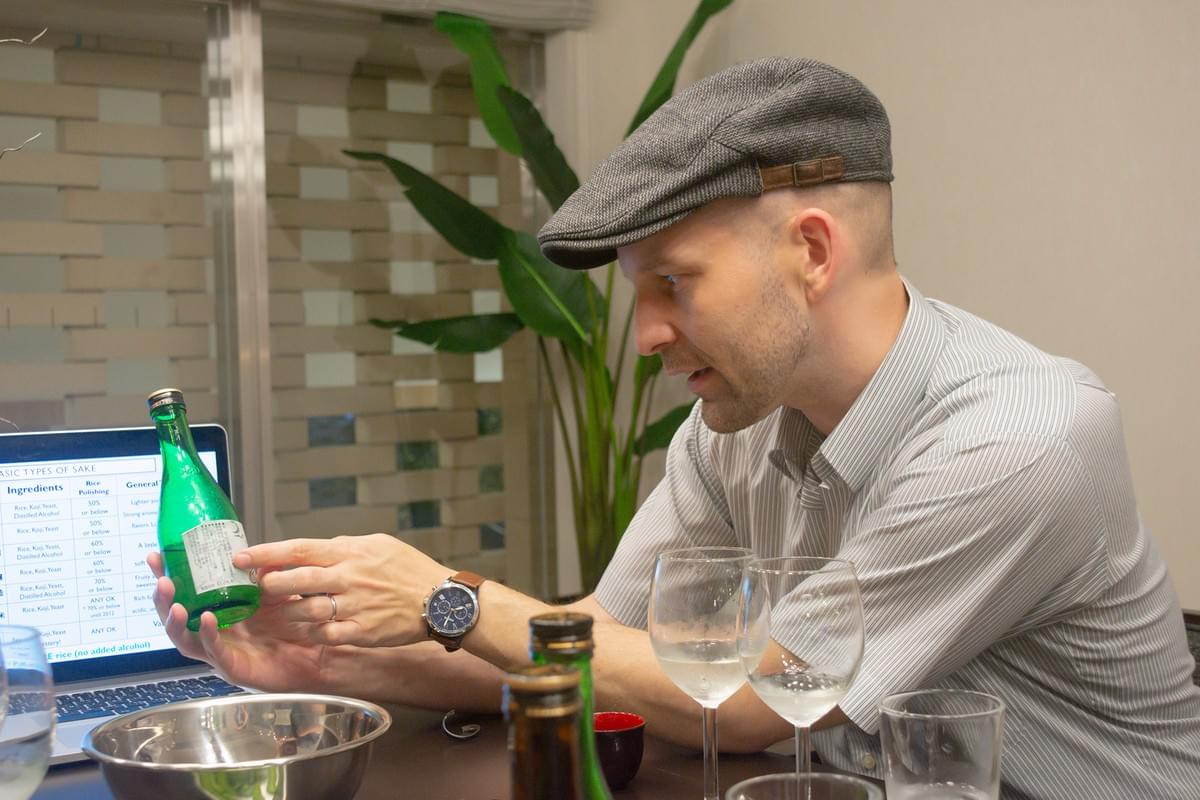
J, reading tasting notes from brewery website: So this one is saying it’s a full, full aroma, and then inside your mouth it really kind of spreads out. That’s very true.
C: Okay.
J: And then, um, “There’s some lightness, but within the lightness there’s some richness of umami.” So they’re talking about the feeling, but there’s not much about the taste here. So you’re not the only one that has trouble actually explaining. Sometimes even the professionals will.
But the impression of the sake, the feeling, the texture, that’s just as important. So anything you can describe is your base, right? “Dry”, “fruity” ... but how does it feel in the mouth? Tell me about the aftertaste. Does it linger? Is it quick?
C: Let’s try it.

J: Really quickly it does fill up the whole mouth. This one, for sure. And I can feel it lingering in the mouth, that aroma. But the aftertaste, I dunno. I feel some taste lingering, but it’s not the throat, right? The throat should be the aftertaste.
C: Yeah, it’s like a really, you know, I would just describe it as clean? The aftertaste isn’t really strong; it does linger a little bit, but it’s not like, I dunno, like, bothering me, I guess.
The Super Premium
Daiginjo Hoyo・大吟醸 鳳陽
Price (may vary by retailer): 720 mL ¥3,080
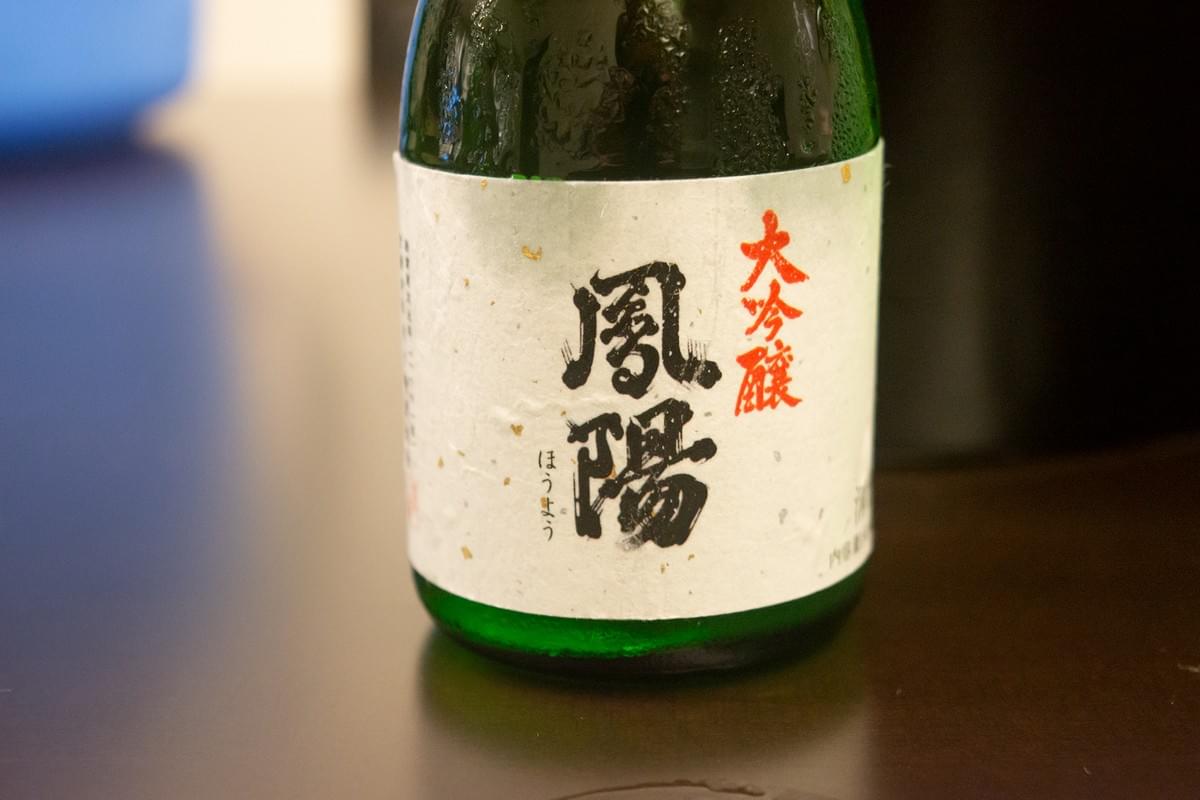
J: I think it’s time to open another sake—let’s go with the super premium. Okay, so this is an Uchigasaki Brewery one; this is a daiginjo. I haven’t tried this one, but usually you can guess, you know, if you’re looking at the rank, probably very aromatic—maybe it’s better to put it in a wine glass. Should be very fruity, floral, something like that. And probably very refined. I’m gonna wash my cup out and—
C: Now I’m jealous—I wanna put mine in a wineglass ... [grabs a wine glass]
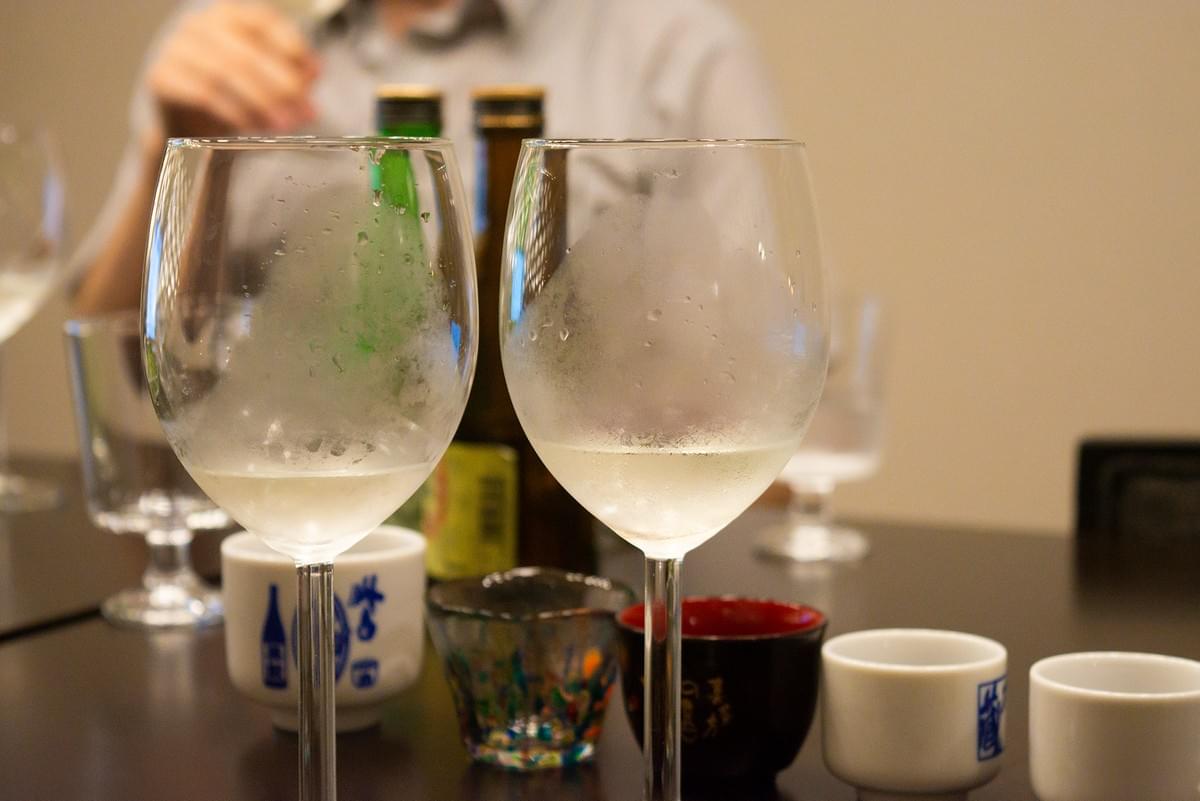
J: But yeah, so let’s start off with the—
C: Oh, the swirl first, right?
J: Yeah, I mean, if you want to.
C: It’s a good smell.
J: Yeah, it opens it up. It’s a delicate taste, right? Or, a delicate smell. You can’t really smell it from up here. You gotta go in a little bit.
C: It’s light, it’s sweet, it’s very, kinda floral, almost.
C, sips sake: Mmmm.
J, sips sake: Mmmm!
C: Oh, that one’s really good.
J: Yeah, yup. So this is the top quality stuff. This is why we don’t start with this one. So what are you feeling? Just your impression is okay ...
C: It’s uh, you know—tastes good. It’s uh, sweeter than . . . it’s pretty sweet. It’s, um, a little fruity, and um… yeah tastes really nice. Doesn’t linger too long, it’s pretty, kind of, refreshing.
J: Yeah, I’d agree. Take another taste, and then try to get a little air in there ...
C: Okay.
J: Do you think anything’s changing, or do you notice anything else? How does it feel in your mouth?
C: It’s definitely soft, like, a very soft—it doesn’t have like any bite to it.
The Box
Oni Koroshi・鬼ころし
Price (may vary by retailer): 180 mL ¥114

C: The Box. Oh man, I’m really excited to try that one because I know it’s gonna be awful. Yeah, it’s gonna kill; all the taste buds are gonna melt in my mouth.
J: I haven’t even tried The Box. I’m scared of the boxes. A devil’s on it ...
SM: Does somebody want to actually try drinking it juice-box style?
C: Oh man.
J: Nooooo. Just have Chris drink the whole thing. [Reconsiders. Mentally prepares himself.] Okay, I’m ready.
C: Oh man, all right. It’s probably, it’s actually not gonna be as bad as I, like—
J: So this one would be definitely a futsu-shu, like, a basic sake.
C: All right, here we go. I’m gonna, I’m gonna do the whole experience. I’m not just gonna chug it. [swirls, sniffs sake] Okay. The smell is, well, actually not that bad.
J: Euuugh. This is, um ... I ... All I smell is—
C: It’s not bad, actually. I don’t think it’s that bad. I mean, it’s not good.

J: I get like a heavy, dull, grain, sensation, right? It’s not, I can’t distinguish if it’s like rice, or if it’s like . . .
C: I’m so confused. This doesn’t really smell.
J: No, if you really put your nose in it, you can smell just a dull sensation.
C: Nothing good ... nothing ... [inhales deeply] ... it’s getting worse. It’s definitely getting worse. Yeah, okay, it’s not good [laughs]. After few sips ... yeah, this is bad.
J: But why, why is it bad is kind of important.
C: It’s almost, like, sour almost? Like, do you—
J: Yeah. It’s like, stale. But it’s not.
You’ll notice a lot of cheaper sakes, the flavor will hit you right away, and then disapear really quick. I don’t wanna force you. But if you take another sip again, you’ll notice the flavor hits you instantly, but disappears so quick, you know. So um, I think that’s part of it.
C: Just to get you drunk, basically?
J: Yeah ...
C: It wasn’t, I—I guess it wasn’t as bad as I thought it was gonna be. But I mean, it’s not good.
J: If it were really bad, they wouldn’t sell it across the country.
C: Right, right. That makes sense.
The Verdict
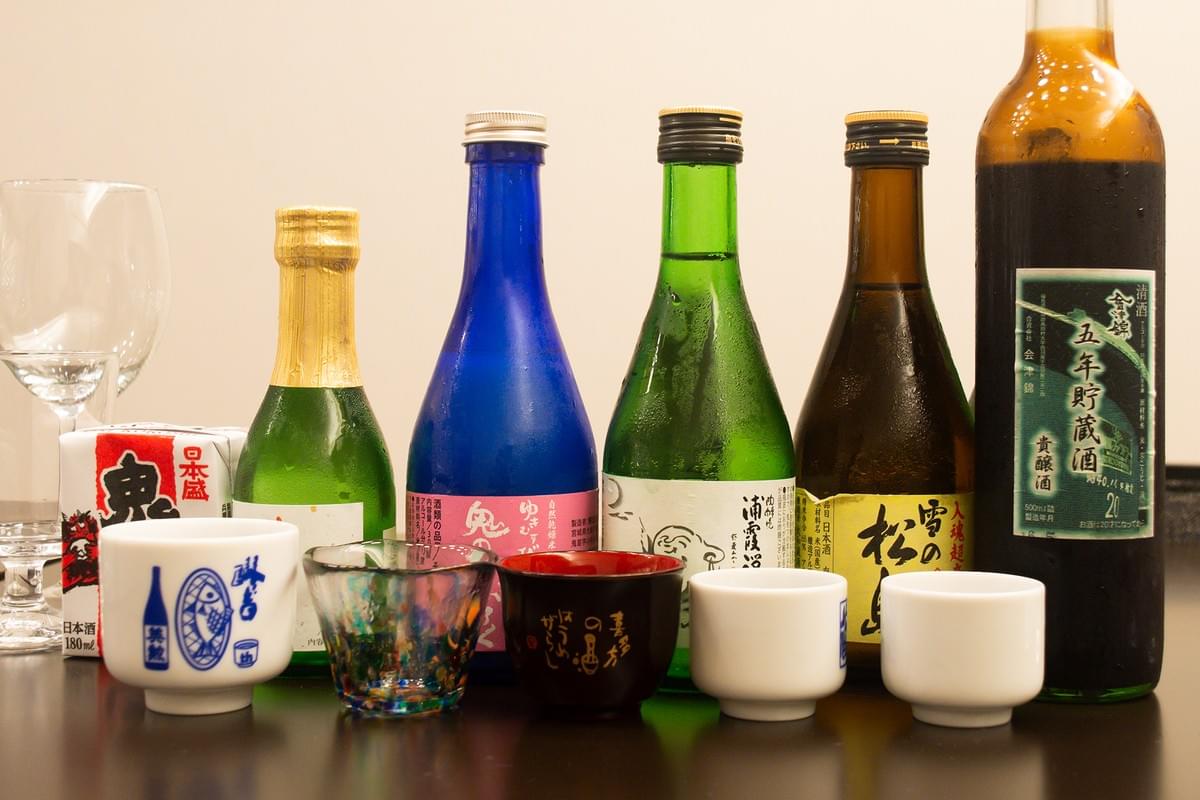
C: They all taste distinctly different, I think. But I can’t really explain why [laughs].
J: This one, the yamahai, it fills your mouth up. It’s a stronger taste, but for the aftertaste? Definitely the dry one is sticking around to almost ten seconds, like forever. And this one [Daiginjo Hoyo] is, definitely cleaner, and gone. But that aroma sticks into your mouth. And there’s a sweetness to the one we had before [Urakasumi Zen], but it’s a more delicate sweetness, definitely lighter.
SM: Which one is your favorite? Out of those four.
C: My favorite? It’s definitely a toss up ...
J: Oooh, good question.
C: It’s definitely between these two. I don’t, I don’t know yet.
J: So you got what, the yamahai?
C: Yeah.
J: And then the daiginjo.
C: I mean, like, I would drink any of these for sure, if like we were out somewhere. This one [Daiginjo Hoyo] is, like, reallllly easy to drink. This one’s kinda dangerous.
J: You don’t really taste any alcohol or anything, right?
C: Yeah, it’s [Daiginjo Hoyo] just kind of sweet, and um, just, it’s gone. This one [Manatsuru Yamahai] has a little bit more aftertaste, so I feel like it’s, like, easier to kind of enjoy, and this one [Daiginjo Hoyo] is easier to just get, like, just accidentally drink too much of, I feel like.
J: And this is what I hope people can understand, like, sake has such a wide variety. If we had more time, I’d talk more about the history and the culture, and the relevance even today.

Sake Details
The Super Dry
Name: Yuki no Matsushima Jukon Chokara (雪の松島 入魂超辛)
Brewery: Taiwagura (大和蔵) in Taiwa, Miyagi
Sake & brewery details (English): taiwagura.co.jp
Purchase in person: At select sake shops throughout Japan. We bought ours at Mutoya (むとう屋) in Sendai Station.
Purchase online: At the Yamaya online store (yamayagm10.jp)
The Iconic Ginjo
Name: Junmai Ginjo Urakasumi Zen (純米吟醸浦霞禅)
Brewery: Urakasumi (浦霞) in Shiogama, Miyagi
Sake details (English): urakasumi.com
Brewery details (English): visitmiyagi.com
Purchase in person: At select sake shops throughout Japan. We bought ours at Mutoya (むとう屋) in Sendai Station.
Purchase online: Direct from the brewery's online shop at e-urakasumi.com
The Slow Brew
Name: Manatsuru Yamahai Junmai-shu (真鶴 山廃仕込み 純米酒)
Brewery: Tanaka Shuzoten (田中酒造店) in Kami, Miyagi
Sake & brewery details (English): manatsuru.co.jp
Purchase in person: At select sake shops throughout Japan. We bought ours at Mutoya (むとう屋) in Sendai Station.
Purchase online: Direct from the brewery's online shop at manatsuru.stores.jp
The Super Premium
Name: Daiginjo Hoyo (大吟醸 鳳陽)
Brewery: Uchigasaki (内ヶ崎酒造店) in Tomiya, Miyagi
Sake details: uchigasaki.com
Brewery details (English): uchigasaki.com/eng
Purchase in person: At select sake shops throughout Japan. We bought ours at Fujiwaraya Michinoku Sake Kikou (藤原屋 みちのく酒紀行) in Sendai Station.
Purchase online: Direct from the brewery's online shop at uchigasaki.com
The Box
Name: Oni Koroshi (鬼ころし)
Brewery: Nihon Sakari (日本盛株式会社) in Nishinomiya, Hyogo.
Sake details: nihonsakari.co.jp
Purchase in person: At convenience stores throughout Japan. We bought ours at 7-11.

